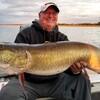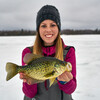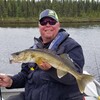
Go-To Tactics of the Pros
We're coming off Canada's birthday, and what better way to celebrate than to fish for smallmouth bass in any one of the tens of thousands of lakes and rivers scattered across Northern Ontario.
It is what many of the top bass anglers in the country are doing right now – the same folks you see on television every week.
And what tricks do they have up their sleeves?
You might be surprised.
While many anglers think that smallmouth bass head into deep water in the summer months, and many surely do – Bob Izumi, host of Real Fishing, says plenty also stay shallow.
"It’s common to be able to catch them shallow and deep in the same body of water," says Izumi, "but I prefer to target the shallow fish using a two-pronged approach.
"I start with a soft plastic swimbait rigged on 1/8-, 1/4- or 3/8-ounce jighead as I search for the fish. It is a subtle yet effective way to find active bass. My favourite swimbaits are 2- and 3-inch long Powerbait Ripple Shad, Pro Shad and Havoc Grass Pigs in green pumpkin, black and baitfish colours."
Izumi also favours thin diameter 8-, 10- and 12-pound test Nanofil or Fireline so he can cast the lures as far as possible. And he always attaches a three-foot-long fluorocarbon leader to the end.
"The key is filling your spinning reel to the maximum," stresses Izumi, "so you can make super long casts. In clear water, you'll find the fish spooky, so I always wear a good pair of polarized glasses to spot the followers. I like copper or gray tinted Costa glasses on bright days and a colour called "Sunrise" when it’s overcast."
Here is where Izumi's "one-two punch" comes into play. If he sees a smallmouth following behind his swimbait but not committing to it, he reels it in quickly and throws out a tube jig.
"A 2.5- or 3.5-inch Powerbait tube in green pumpkin or smoke/silver is the perfect follow-up bait," says Izumi. "But it is important to cast it at least 10 to 15 feet past the fish. That way you won't spook it. Then, drag it closer to the bass and let it lie on the bottom. Most times, the smallmouth will eat it because you've fired them up with the swimbait."
Pete Bowman, the personable co-host of Fish 'N Canada, loves fishing for early summertime Northern Ontario smallmouth because they are typically aggressive. But they can still have their finicky days.
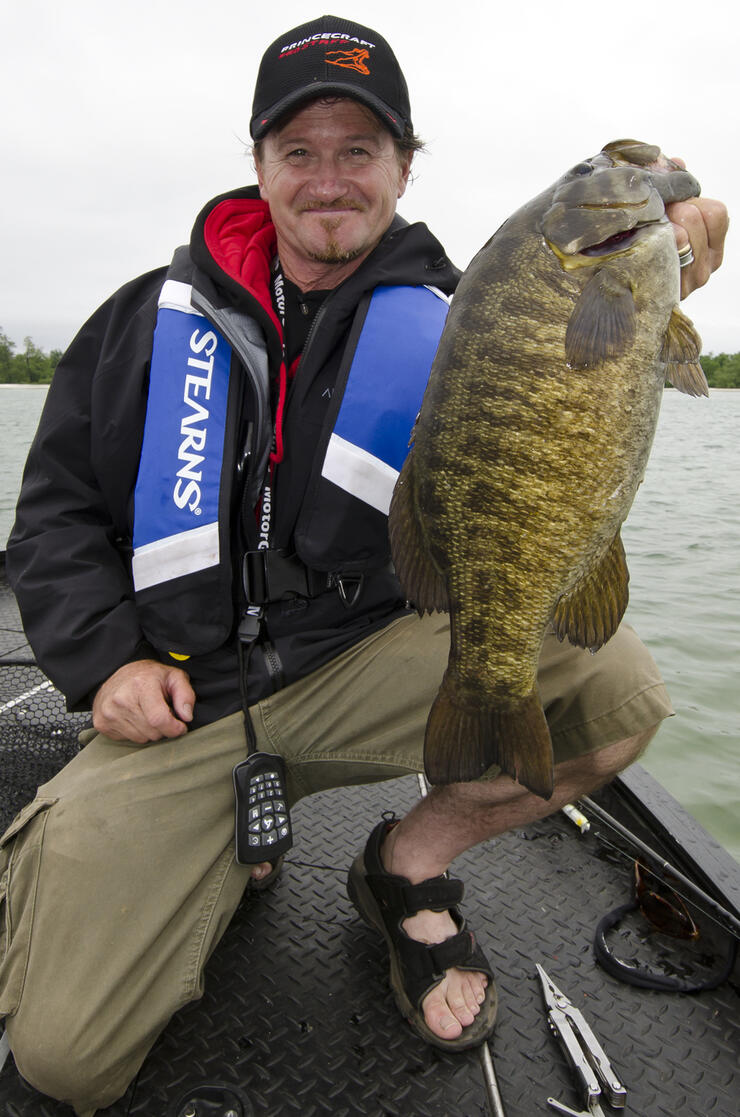
"When that happens," says Bowman, "I pull out the trusty 4-inch Yamamoto Senko. It is a killer bait any time of the year, but especially early in the summer.
"I like to fish it two ways: wacky rigged with no weight in shallow water or wacky style on a drop shot for deeper fish. And I typically stick with two colour patterns. Either light green like Baby Bass or a bright colour like Pearl or Off White."
Bowman says the key to both presentations is doing as little as possible, letting the stick bait undulate slowly as it falls.
"If the water is clear," says Bowman, "I’ll use a 6- or 8-pound test fluorocarbon line, or a thin 10- to 12-pound braid with a fluorocarbon leader. If the water is stained, on the other hand, I'll go with a straight braid. The leader knot is a weak point that can break, so I avoid it whenever I can.
Regardless of the technique, I also prefer using a 6 1/2-foot medium action spinning rod with a fast tip and a 1,000 or 2,000 size reel. Just cast the Senko around boulders and emerging weed clumps and get ready to set the hook."
Mention smallmouth bass fishing in Northern Ontario, and one name that immediately comes to mind is Derek Strub. Strub has won hundreds of thousands of dollars on the Canadian bass fishing tournament scene and is regarded as the Dean of Dropshotters.
"In the heat of summer, I prefer chasing smallies in deeper water," says Strub. "In many Northern Ontario lakes, the fish will migrate as the water warms up above their comfort level. They move from the shallows to the cooler depths."
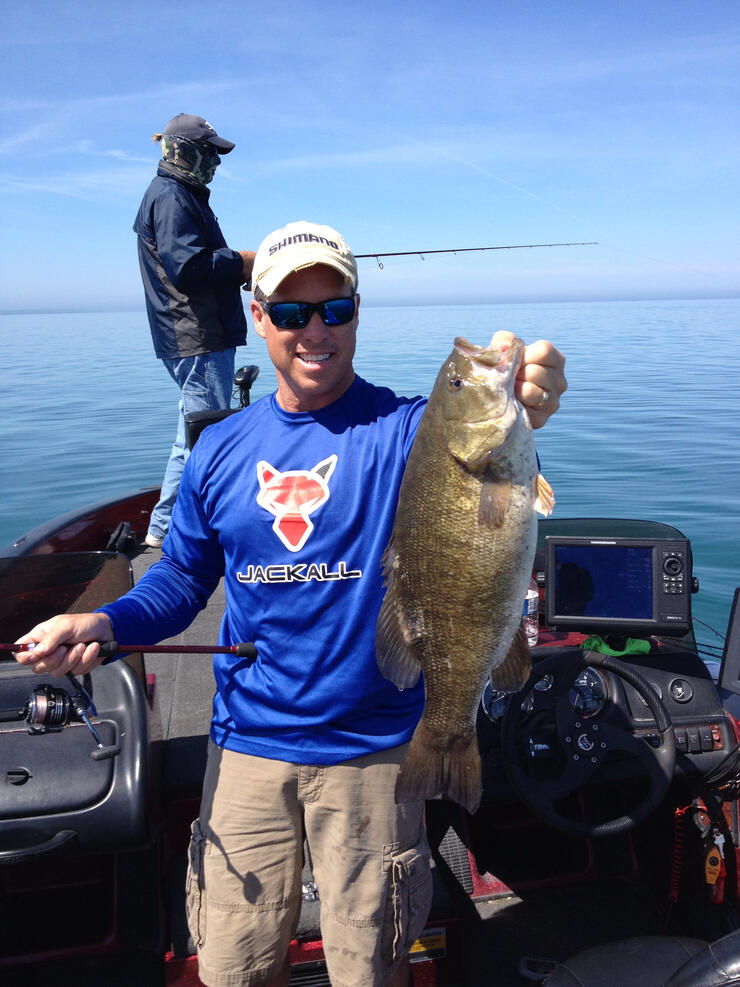
Deep, of course, is a relative term, and Strub notes that it will vary depending on the body of water that you're fishing in. On one lake, for instance, it might be 30 to 40 feet down, while on another lake, even one right across the road, it could be 18 to 20 feet.
"My favourite technique for probing deeper water is drop-shotting," says Strub. "It’s very effective because it allows you to get a bait down to the bottom quickly. But you still have the ability to fish with the small finesse baits that are sometimes needed in the clear lakes for which Northern Ontario is famous.
"I normally have several rods rigged with different baits and multiple leader lengths from 8-inches to 20-inches. My 'go-to' bait is the Jackall Crosstail Shad in green pumpkin, watermelon or smoke purple colour. I also use a stiffer rod for drop-shotting in deeper water, preferring a 7-foot medium-action Zodias spinning rod and Shimano Stradic 3000 FK loaded with 5- to 8-pound test Power Pro braid with an 8-pound fluorocarbon leader. The braid lets you feel the bait better in deep water so you can sense the bite and get a solid hook-up, while the fluorocarbon is invisible so you can increase the number of bites."
Strub is also quick to point out that fishing for smallmouth bass in deeper Northern Ontario lakes is all about location. You have to find the fish first.
"Make sure you spend the time looking for the structure and the fish before you actually wet a line," says Strub. "I use Humminbird's side imaging technology to quickly break down high percentage areas to locate the 'spots on the spot' before I ever make a cast.
"Oh, yes, and one last tip. Don't overwork the bait. When you're drop-shotting for smallmouth bass in Northern Ontario, less is always more."
Recommended Articles

Cast Into the Heart of a Walleye Paradise
Ontario Brook Trout

20 Years With Fish TV!

3 Great Ontario Walleye Destinations
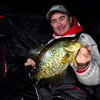
Ice Shelter Saviours

Top 5 Flies for Brook Trout

Speckle Splake Spectacular
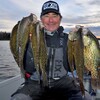
Bivins’ Bounce Crappies
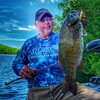
Discover the 3 Best Bass Fishing Lakes in Ontario

Rainy Lake Bass Blast
Expanding Your Horizons

Talon Lake Lunge
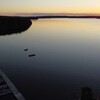
Summertime Walleye
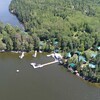
Miles Bay Camp
Fly Casting In The Wind

Eating Northern Pike
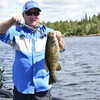
Bob Izumi searches for bass and pike

Best WhiteFish Tactics

Fly-in Fishing


